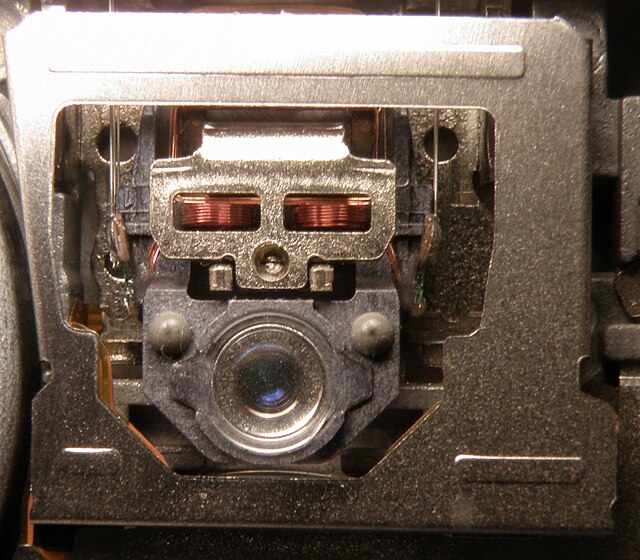A magneto-optical drive is a kind of optical disc drive capable of writing and rewriting data upon a magneto-optical disc. 130 mm (5.25 in) and 90 mm (3.5 in) discs were the most common sizes. In 1983, just a year after the introduction of the compact disc, Kees Schouhamer Immink and Joseph Braat presented the first experiments with erasable magneto-optical compact discs during the 73rd AES
Convention in Eindhoven. The technology was introduced commercially in 1985. Although optical, they normally appear as hard disk drives to an operating system and can be formatted with any file system. Magneto-optical drives were common in some countries, such as Japan, but have fallen into disuse.
A Magneto-optical disc surface has sector partition rectangles.
Visible sectors partition lines on a 130 mm 652 MB magneto-optical disk. (1024 user byte, 17 sectors per track).
A 130 mm 2.6 GB magneto-optical disc
A 230 MB Fujitsu 90 mm magneto-optical disc.
In computing, an optical disc drive is a disc drive that uses laser light or electromagnetic waves within or near the visible light spectrum as part of the process of reading or writing data to or from optical discs. Some drives can only read from certain discs, but recent drives can both read and record, also called burners or writers. Compact discs, DVDs, and Blu-ray discs are common types of optical media which can be read and recorded by such drives.
A CD-RW/DVD-ROM computer drive
An external Apple USB SuperDrive
A removable internal Lenovo UltraBay slim type disc drive
The CD/DVD drive lens on an Acer laptop








